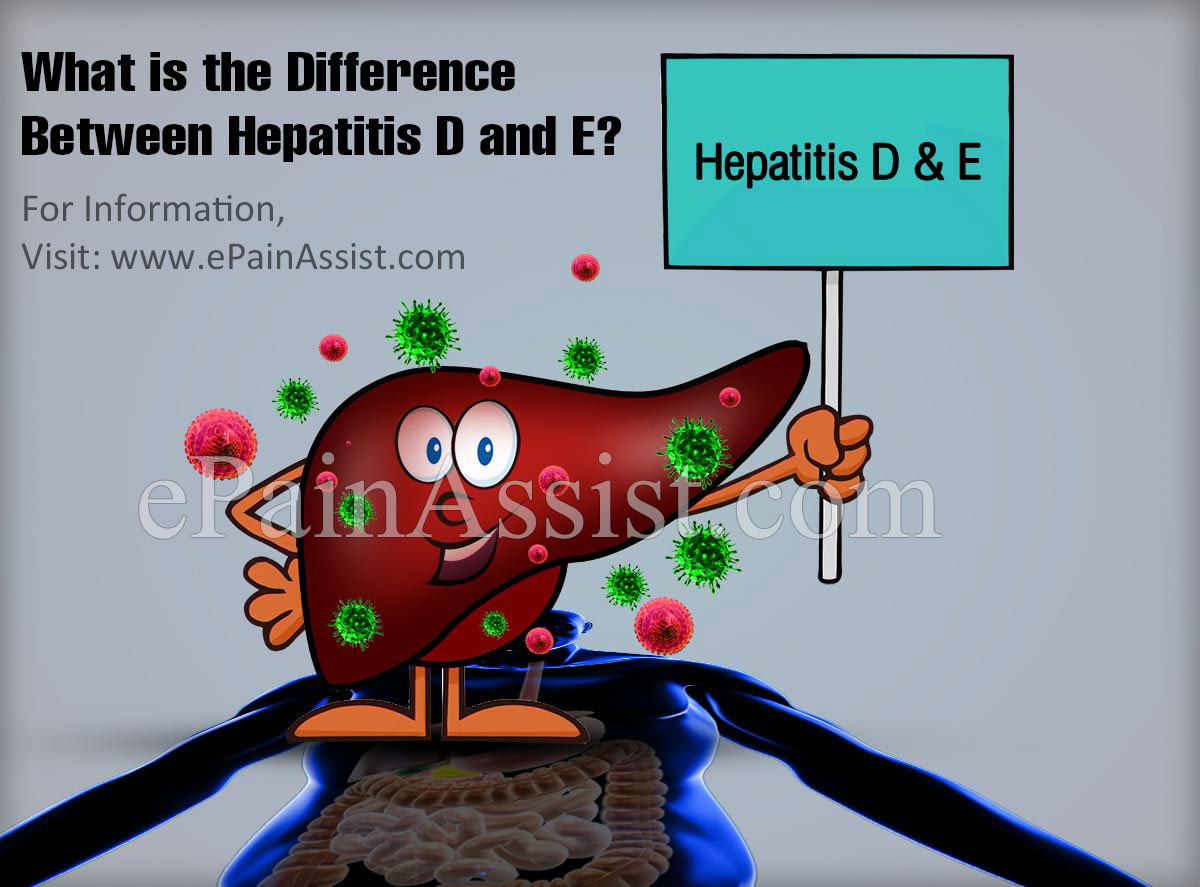This article on Epainassist.com has been reviewed by a medical master , as well as checked for facts , to assure the proofreader the best possible truth .
We follow a strict editorial insurance and we have a zero - tolerance policy regarding any grade of plagiarism . Our article are resourced from reputable online pages . This clause may contains scientific mention . The phone number in the parentheses ( 1 , 2 , 3 ) are clickable inter-group communication to peer - review scientific papers .
The feedback link “ Was this clause Helpful ” on this page can be used to report message that is not exact , up - to - date or questionable in any mode .

This clause does not provide medical advice .
What is the Difference between Hepatitis D and E?
Hepatitis D ( HDV ) and Hepatitis E ( HEV ) partake in some differences , but the most relevant is the mechanics of transmission : in HDV it is via permucosa or transdermal , which denotes by way of , or through , a mucous tissue layer or skin ; while in the case of HEV typically require oro - fecal transmission , because of the consumption of contaminated water .
About Hepatitis D
The delta computer virus or computer virus D ( VHD ) is a faulty virus that needs the presence of Hepatitis B virus to produce contagion . The virion has a lipoprotein envelope formed by HBsAg and an home protein structure where the viral genome resides , constituted by a single strand of RNA that forms a complex with the only antigen encoded by the virus itself , HDAg . Infection is very common in child and young individuals . The transmittal is permucosa or transcutaneous and is favored with the lack of hygiene . transmission with HDV should be suspect in patients who fare from autochthonous areas ( easterly European countries , Mediterranean and Central America ) and in drug users shell out parenterally and never in the absence of HBV transmission . Different clinical situations related to HDV infection such as HBV / HDV coinfection , HDV superinfection in patients already infected with HBV or chronic HDV transmission can be characterise by studying the presence or absence of viral RNA , HDAg and anti - HIV antibodies . – VHD .
The clinical presentations of the infection can vary from acute benign forms , continuing flesh sometimes symptomless to fulminant hepatitis . Simultaneous infection with HDV and HBV ( co - infection ) normally leads to sharp hepatitis , often self - limited and undistinguishable from acute HBV hepatitis alone . contagion with HDV in patient previously taint with HBV ( superinfection ) commonly has a worse prognosis , causes life-threatening sharp hepatitis or an exacerbation of chronic hepatitis B. The organic evolution to a continuing form of hepatitis due to HDV occurs in almost all patient .
The bearing of VHD should not be sought in the absence seizure of HBV . The microbiological diagnosing of HDV is based on the detection and/or quantification of antigen , antibodies and the genome of the virus . The samples of option are blood serum and , in certain vitrine , liver biopsy .
About Hepatitis E
It is the precede cause of hepatitis and jaundice in the human beings with 20 million new infection , 3 million acute hepatitis and 57,000 death each year . Hepatitis E is a viral transmission of typically orofecal transmission system , mainly through polluted piddle . Its clinical characteristic are those of an acute hepatitis similar to that produced by the HAV .
The hepatitis E computer virus ( HEV ) belong to the category Hepeviridae and represent the genus Hepevirus . It is an RNA computer virus , of overconfident polarity and modest size , without gasbag , and icosahedral . There are 4 genetic constitution key , of which I and II affect entirely man and III and IV to human race and animals , especially pigs . Its transmitting mechanism is very similar to that of hepatitis A and , like this one , hepatitis E usually does not become chronic . Although the disease in general presents a scurvy mortality ( 0.2 - 0.3 % ) , it can become highly serious in fraught women , where it frequently causes fulminant hepatic failure with mortality rates between 20 - 30 % and in immunocompromised patients .
The average brooding period for hepatitis E is about 40 day . The elevation of serum liver enzyme value ordinarily occur between 30 and 120 days after infection . faecal evacuation of HEV get down about a hebdomad before the attack of disease symptom and continues for 2 or 3 weeks afterwards . The “ icteric ” phase is characterized by the appearance of a xanthous colour on the cutis and mucous membranes , associated with a flu - like condition . you may also observe coluria ( mien of gall element in urine ) , clay - colored feces , hepato- and splenomegaly ( exposit liver and spleen ) , erythema and itching rash , etc .
Enzyme immunochemical assay are the main diagnostic putz for the detection of antibody against HEV . The genome ( RNA ) of HEV can be detected in stool and blood serum by RT - PCR . Its detection indicate active infection . The diagnosis of the infection by the HEV is very similar to the one of the contagion by the HAV and is base on the collateral spotting of specific antibody of character IgM and IgG that constitute the serologic markers of the infection .
reference :
Also show :